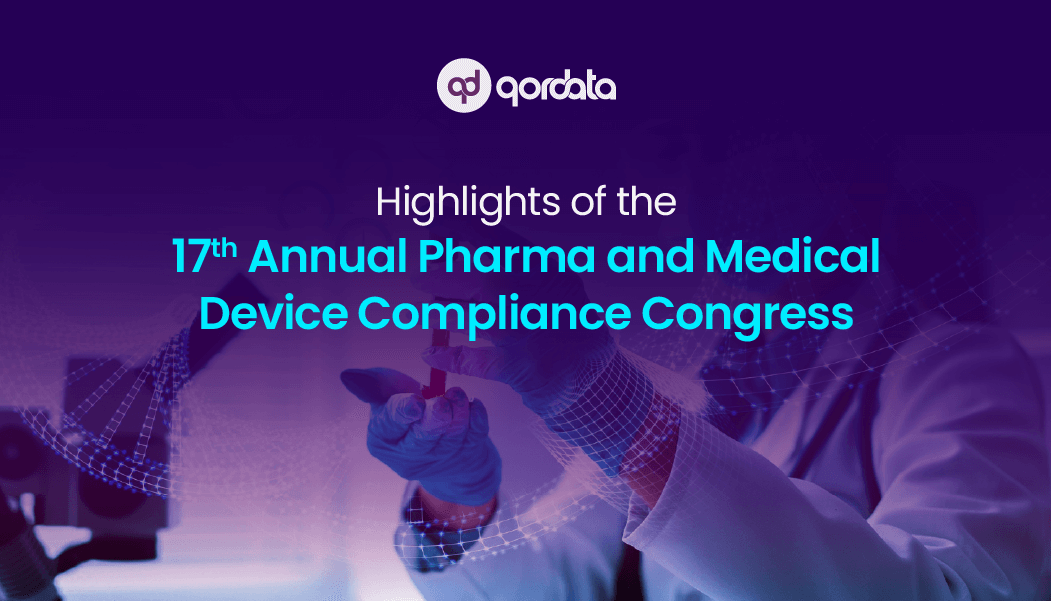Table of Contents
ToggleFor compliance professionals working in life sciences companies, a comprehensive understanding of the diverse payment categories, financial transactions, and transfers of values required by the Center for Medicare and Medicaid Services (CMS) for reporting is crucial.
By thoroughly understanding the scope of financial transactions made by reporting entities to covered recipients, compliance professionals can empower their organizations to submit accurate and complete data to CMS, thereby minimizing the risk of post-submission disputes.
This article explains the various nature of payment categories of open payments data based on definitions and examples from open payments stakeholders.
It also addresses the challenges of ever-evolving rules and regulations under the Open Payments Sunshine Act. It outlines a path forward for organizations to ensure compliance with the applicable laws.
Program Expansion: Recent Developments in Open Payments
The Open Payments Program was recently updated with the inclusion of three new Natures of Payments categories:
- Acquisitions
- Debt forgiveness
- Long-term medical supply or device loan
Additionally, two previously distinct education categories have been consolidated into one category. The categories are:
- Compensation for serving as faculty for a medical education program
- Compensation for serving as a speaker for a medical education program
These categories were consolidated in 2021 to provide a more organized system for reporting educational payments.
Compliance professionals in the life sciences industry must take note of such recent changes to ensure accurate and up-to-date reporting to CMS to avoid the risk of getting penalized or fined for submitting incorrect or incomplete data.
For further details on these developments, refer to the relevant authoritative source.
Natures of Payment
1. Acquisitions
Definition: Acquisitions payments or buyout payments are made to covered recipients with an ownership interest in a company that has been acquired.
Example: A life sciences company buying a share of ownership of a company that is partially owned by a physician or his/her immediate family member.
2. Charitable Contribution
Definition: Charitable contributions are transfers of values made to organizations with tax-exempt status under the Internal Revenue Code of 1986.
These payments do not include the transfer of values that would be more specifically described by one of the other nature of payments.
Example: A life sciences company donating funds to a teaching hospital to help pay for a health education program.
3. Compensation Provided for Non-Consulting Service
Definition: The compensation for non-consulting service, i.e., faculty/speaker at an event other than a continuing education program, is a payment that life sciences companies make to physicians for speaking, training, and education engagements.
4. Compensation for serving as a faculty member or as a speaker for a medical education program
Definition: The compensation made to physicians for serving as a faculty member or as a speaker for a medical education program.
Example: A life sciences company pays money to a teaching hospital to pay for an annual course for its physicians. The course outlines an update on the latest treatment for a disease or provides research information on the disease.
5. Consulting Fee
Definition: Consulting fee is a payment made by companies to physicians to get their advice or expertise for a medical product or treatment.
Consulting fees are arranged with a written agreement between the company and the physician. The agreement includes the company’s particular business needs for which they pay a physician.
Moreover, the fair market value/compensation of the physician’s consulting service is decided based on factors such as area of expertise, experience, field, educational background, and more.
Example #1: A life sciences company has developed a drug, “Y,” to treat a particular disease. The company is now seeking advice from physicians on designing a large study to test the drug on patients.
Dr. X has a vast majority of patients that suffer from the disease that drug “Y” is developed to treat. Dr. X also has extensive research experience on this disease.
The company asks Dr. X to spend about 5 hours per week working with other physicians to create a new research study. Dr. X agrees and is paid for the time he allocates for this research.
Example #2: A medical device company manufactures a device for surgeons that they can use to perform heart surgeries. The company pays some physicians to give the device a test run by performing surgeries on computer-simulated patients at the company’s headquarters.
The company pays physicians for the time they spent testing the tool and providing feedback to improve the device’s function. They are also paid for flights, hotel rooms and meals.
Example #3: A drug manufacturer invites a physician who frequently prescribes the company’s drug to educate other physicians about the drug at a local restaurant.
The physician, the company invites is paid for the time they spend preparing the educational material and speaking at the program.
6. Current or Prospective Ownership or Investment Interest
Definition: Ownership or investment interest held by physicians and teaching hospitals or the ownership or investment interest that physicians or teaching hospitals could potentially hold are to be reported.
Example: Dr. X learns about a drug manufacturer developing a new antibiotic, “Y.” Dr. X knows that the drug might become successful and asks if he/she can invest in the company. The company agrees, and X ends up owning a certain percentage of the company.
7. Debt Forgiveness
Definition: Forgiving the debt of a covered recipient, a physician owner, or the physician’s immediate family.
Example: A physician owes a life sciences company an amount of money for medical supplies. The life sciences company forgives the debt and allows the physician to keep the supplies without providing payment.
8. Education
Definition: The type of financial transactions or payments for classes, activities, programs, or events that involve learning or teaching a professional skill are required to be reported to the CMS. This payment can include textbooks, medical journal articles, and other related items.
Example: Life sciences companies producing drugs and devices for a particular medical condition may offer textbooks to physicians free of charge and provide information related to the latest treatments for the medical condition.
9. Entertainment
Definition: A physician’s attendance at a recreational, cultural, sporting, or any other event that would generally have a cost is required to be reported to the CMS.
Example: A physician receives tickets to a local football game from a drug or device manufacturer that owns the season tickets.
10. Food and Beverage
Definition: Any payments made by the company for a physician’s food and beverage.
Example: A company’s sales representative may speak to or educate a physician about a new drug or device that his company manufactures. To have this conversation, the sales representatives invite the physicians for lunch and pay for the meal.
11. Gift
Definition: A general category that includes the items provided by the company to physicians or teaching hospitals that do not fit into any other category.
Example: Promotional or branded items such as clocks, flash drives, or similar items.
12. Grant
Definition: A grant is a payment made to physicians or teaching hospitals for supporting a specific cause or activity.
Example: A medical device manufacturer gives a grant to teaching hospitals to pay for special training of physicians who want to learn more about performing surgeries to provide patients with the company’s device.
13. Honoraria
Definition: Honoria is similar to consulting fees but generally reserved for a brief, one-time activity. Another differentiator of this nature of payment is that Honoria is usually provided for services without a set price.
Example: A medical device manufacturer representative goes to a medical meeting and asks the attendees (physicians) for an hour to discuss the features they want to see on a medical device. The representative pays each physician a one-time honorarium for the time and suggestions he receives from physicians.
14. Long-term medical supply or device loan
Definition: The loan of a device or supplies for a period of 91 days or longer.
Example: A device manufacturer that lends one of its products/devices to a teaching hospital for a period of 120 days or longer.
15. Research
Definition: Payments made for research-related activities, including the time physicians spend enrolling patients in studies for new drugs and devices.
Research payments can include direct compensations to physicians, funding for research studies coordination and implementation, or study participants to cover study expenses.
Example: A physician wants to study treatments for specific diseases. A life sciences company is interested in the results and offers funds for the physician’s incentives to recruit participants for their studies.
16. Royalty
Definition: The term “royalty” in the context of intellectual property refers to a type of payment made to an individual or entity (often a physician in the medical field) based on the sales or usage of products that incorporate their intellectual property, such as inventions or innovations.
Example: Let’s say a medical device manufacturer develops a new medical device, such as an advanced surgical tool, and collaborates with a physician who contributed significantly to the invention of this device.
The physician’s intellectual input might include ideas, concepts, designs, or even the application of medical knowledge to improve the device’s functionality or effectiveness.
As part of the collaboration agreement, the manufacturer might agree to pay the physician a royalty fee for each unit of the sold medical device. This payment is usually a percentage of the sales revenue generated from the device.
For instance, if the manufacturer and the physician agree on a royalty rate of 1% and the device sells for $1,000, then for each unit sold, the physician would receive $10 as a royalty payment (1% of $1,000).
This payment is a way of compensating the physician for their contribution to the creation of the product and for allowing the manufacturer to use their intellectual property in the device.
17. Space Rental or Facility Fees
Definition: The financial transactions associated with renting a space or facility (such as a teaching hospital).
Example: A drug manufacturer wants to educate a physician on administering a drug. The drug manufacturer pays a teaching hospital to reserve space within the hospital so that the teaching/training can be conducted.
18. Travel and Lodging
Definition: The payments associated with traveling or temporary accommodation, such as hotel fees, airfare, mileage, and cab fare.
Example: A medical device company invites a group of physicians for training at their headquarters. The company pays for the physician’s airfare and hotel rooms when the physicians travel to the company’s headquarters for training.
Conclusion
The diverse payment categories explained above are mandated by the Center for Medicare and Medicaid Services (CMS) and are the bedrock for aggregate spend reporting. Given that it is the core responsibility of compliance professionals in the life sciences industry to ensure ethical financial interactions, fortifying the vital relationship between healthcare, innovation, and regulatory compliance, leveraging a data-driven aggregate spend reporting solution would reduce manual time-consuming tasks while ensuring adherence to life sciences regulatory compliance.



